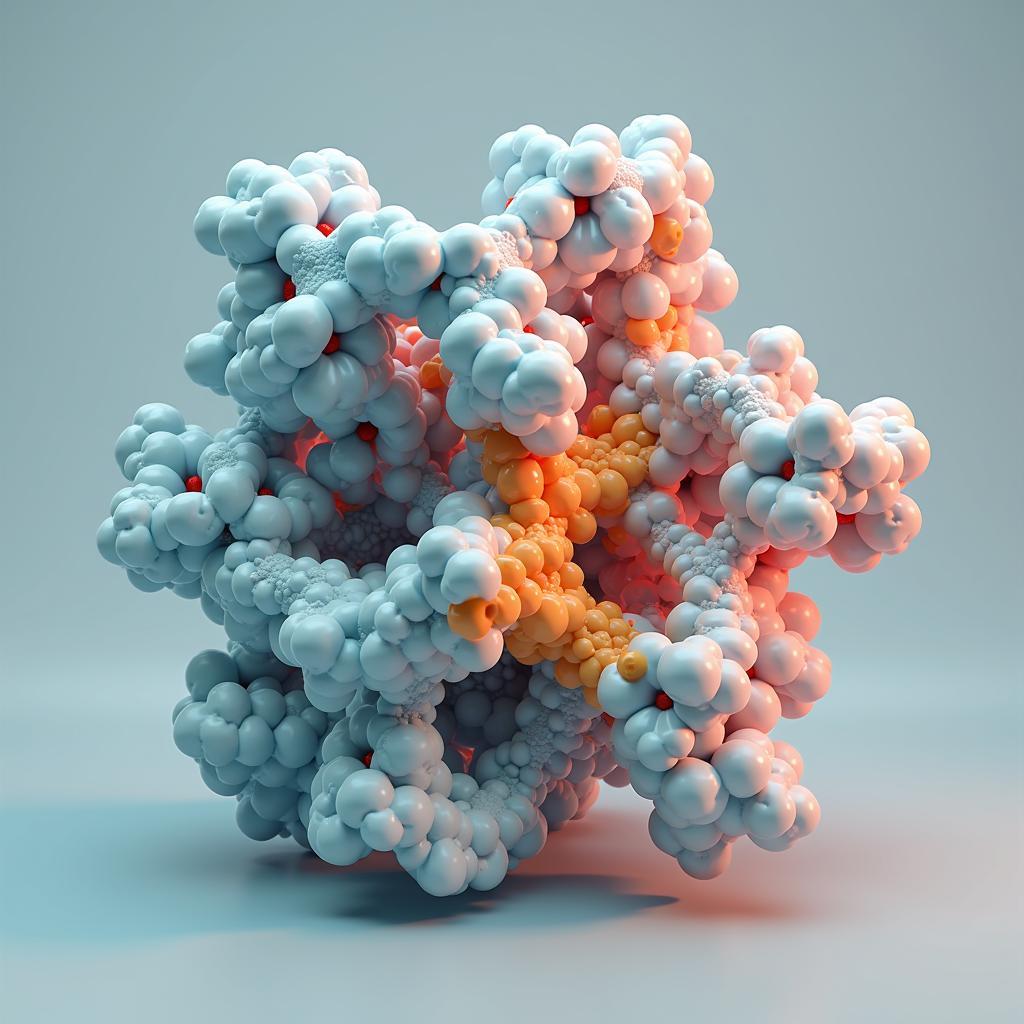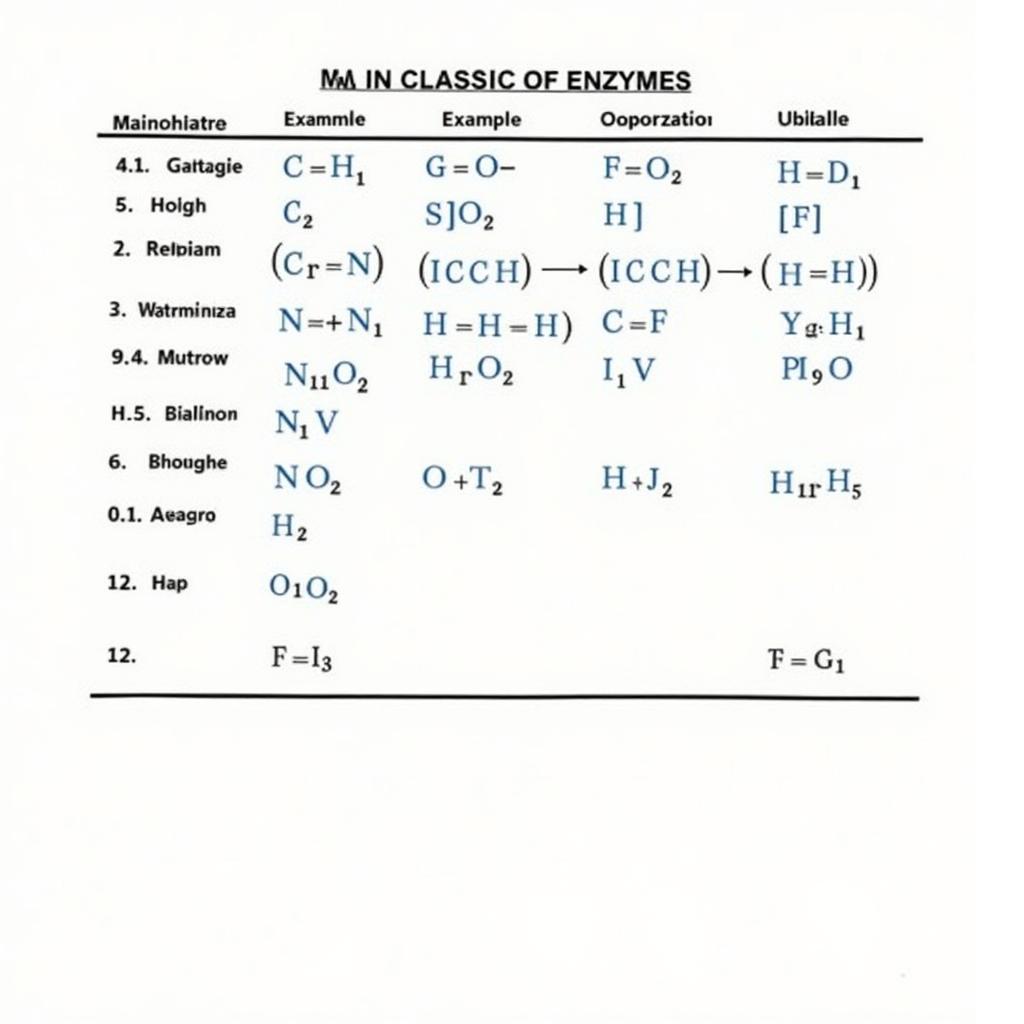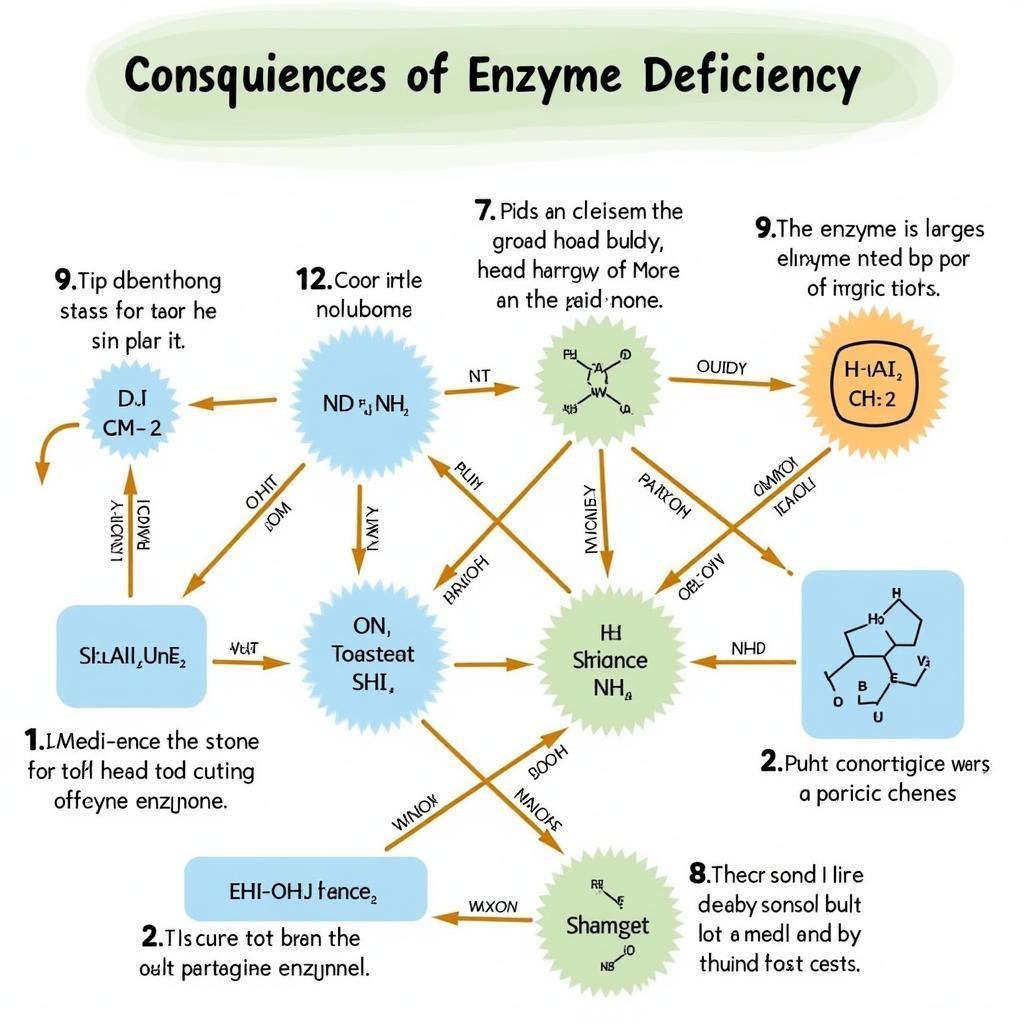Enzymes are essential proteins that act as catalysts, speeding up chemical reactions within living organisms. They play crucial roles in various biological processes, from digestion to DNA replication. Have you ever noticed that many enzyme names end with the suffix “-ase”? This consistent naming convention isn’t arbitrary. The “ase” suffix signifies that the molecule is an enzyme, offering a clue about its function. This article delves into the world of “ase” suffix enzymes, exploring their significance and diverse roles in biological systems.
The Significance of the “-ase” Suffix
The “-ase” suffix is a hallmark of enzyme nomenclature, providing a clear indication that a molecule possesses catalytic activity. This naming system originated in the late 19th century as scientists began to isolate and characterize these crucial proteins. Before this standardized system, enzymes were often given arbitrary names, making it difficult to discern their functions or relationships.
The adoption of the “-ase” suffix brought order and logic to enzyme classification. By appending “-ase” to the substrate upon which an enzyme acts or to the reaction it catalyzes, scientists established a more systematic approach. For instance, lactase breaks down lactose, while DNA polymerase helps in synthesizing DNA. This naming convention not only simplifies identification but also provides insights into the enzyme’s specific role.
 Enzyme Structure
Enzyme Structure
Classes of Enzymes and Their Functions
Enzymes are broadly categorized into six main classes based on the type of chemical reactions they catalyze:
-
Oxidoreductases: These enzymes facilitate oxidation-reduction reactions, transferring electrons between molecules. Examples include dehydrogenases and oxidases.
-
Transferases: Transferases catalyze the transfer of functional groups, such as phosphate or amino groups, from one molecule to another. Kinases and transaminases fall under this category.
-
Hydrolases: These enzymes break down larger molecules into smaller units by adding a water molecule. Examples include proteases, lipases, and nucleases.
-
Lyases: Lyases catalyze the breaking of chemical bonds without the addition of water, often resulting in the formation of double bonds or ring structures. Decarboxylases and aldolases are examples of lyases.
-
Isomerases: These enzymes facilitate structural rearrangements within a molecule, converting it from one isomer to another. Examples include racemases and epimerases.
-
Ligases: Ligases, also known as synthetases, catalyze the joining of two molecules, often coupled with the hydrolysis of ATP. DNA ligase, which joins DNA fragments, is a well-known example.
 Enzyme Classification
Enzyme Classification
The Importance of ASE Enzymes in Biological Systems
Ase Suffix Enzymes play indispensable roles in countless biological processes, ensuring the smooth functioning of living organisms. Let’s explore some key areas where their activity is paramount:
1. Metabolism: Enzymes are central to metabolism, the intricate network of chemical reactions that sustain life. They break down nutrients, synthesize essential molecules, and provide energy for cellular processes.
2. Digestion: Digestive enzymes, such as amylase, protease, and lipase, break down food molecules into smaller, absorbable units, enabling the body to extract nutrients efficiently.
3. DNA Replication and Repair: Enzymes like DNA polymerase and DNA ligase are crucial for accurately replicating and repairing DNA, ensuring the faithful transmission of genetic information.
4. Cell Signaling: Enzymes participate in cell signaling pathways, transmitting signals within and between cells, coordinating various cellular activities.
5. Immune Response: The immune system relies heavily on enzymes. For instance, proteases are involved in antigen processing and presentation, while lysozyme breaks down bacterial cell walls.
ASE Enzyme Deficiency Disorders
Dysfunction or deficiency of specific enzymes can disrupt these vital processes, leading to various health problems. These conditions, often referred to as enzyme deficiency disorders, can be inherited or acquired.
One well-known example is phenylketonuria (PKU), a genetic disorder caused by a deficiency of the enzyme phenylalanine hydroxylase. This enzyme converts the amino acid phenylalanine to tyrosine. Without it, phenylalanine builds up to toxic levels, leading to intellectual disabilities and other health issues.
 Enzyme Deficiency Disorder
Enzyme Deficiency Disorder
Advancements in ASE Enzyme Research
The study of enzymes, or enzymology, is a dynamic field with ongoing research leading to remarkable discoveries and applications. Scientists are constantly uncovering new enzymes and unraveling the complexities of their mechanisms.
One area of significant interest is the development of enzyme replacement therapies for enzyme deficiency disorders. By administering the missing or deficient enzyme, scientists aim to restore metabolic balance and alleviate symptoms.
Furthermore, enzymes have found extensive use in various industries, including:
- Biotechnology: Enzymes are employed in genetic engineering, DNA sequencing, and the production of pharmaceuticals.
- Food Industry: Enzymes enhance flavor, improve texture, and extend the shelf life of food products.
- Detergents: Enzymes break down stains and facilitate cleaning at lower temperatures.
Conclusion
ASE suffix enzymes are fundamental to life, driving countless biological processes that keep us alive and functioning. Their consistent naming convention provides a clear indicator of their catalytic activity and offers insights into their specific roles. Understanding these enzymes is not only crucial for comprehending the complexities of life but also for developing novel therapies and applications across various fields. As research progresses, we can expect even more groundbreaking discoveries and innovations stemming from the fascinating world of enzymes.
FAQs About ASE Suffix Enzymes
1. Are all enzymes named with the “-ase” suffix?
While the “-ase” suffix is the standard for most enzymes, there are exceptions. Some enzymes, particularly those discovered before the naming convention was established, retain their original, often less descriptive names.
2. Can enzymes be regulated?
Yes, enzyme activity is tightly regulated within cells. Factors such as temperature, pH, substrate concentration, and the presence of inhibitors or activators can influence their catalytic rates.
3. What is the difference between a cofactor and a coenzyme?
Both cofactors and coenzymes are non-protein molecules that assist enzymes in their functions. Cofactors are typically metal ions, while coenzymes are organic molecules, often derived from vitamins.
4. What are the industrial applications of [words ending ase]?
[Words ending ase] find widespread use in various industries. In biotechnology, they are employed in genetic engineering, DNA sequencing, and pharmaceutical production. The food industry utilizes them to enhance flavor, improve texture, and extend shelf life. Additionally, they are incorporated into detergents for stain removal and efficient cleaning at lower temperatures.
5. How can I learn more about specific [5-letter words ending with ase]?
For further information on specific enzymes, you can refer to online databases like the Enzyme Commission (EC) database or consult biochemistry textbooks and scientific journals.
Need help? Contact us at Phone: 0369020373, Email: aseanmediadirectory@gmail.com Or visit: Thôn Ngọc Liễn, Hiệp Hòa, Bắc Giang, Việt Nam. We are available 24/7 for your assistance.